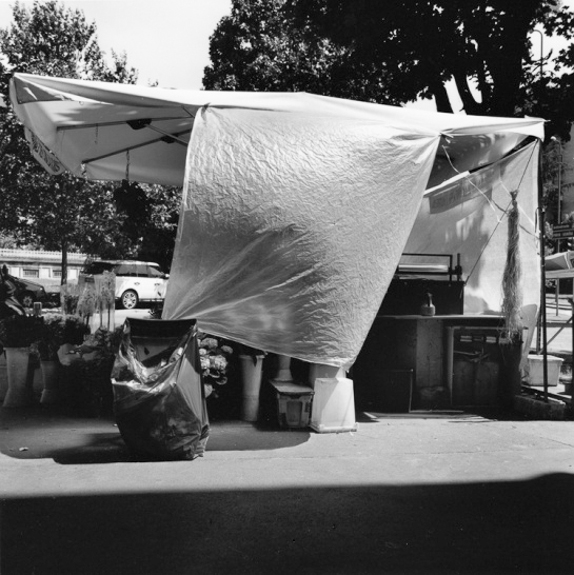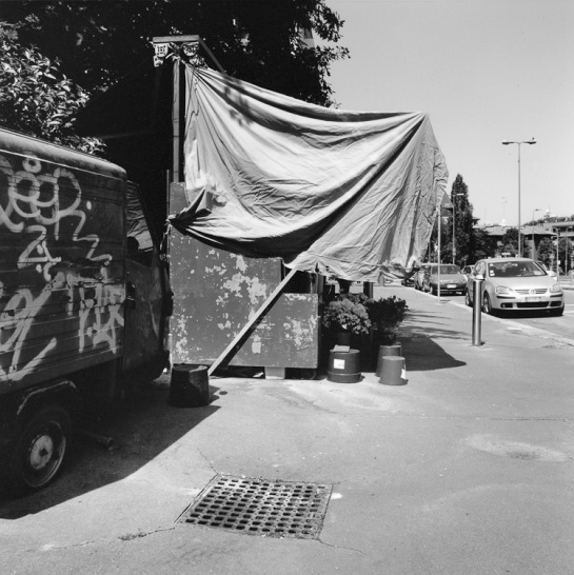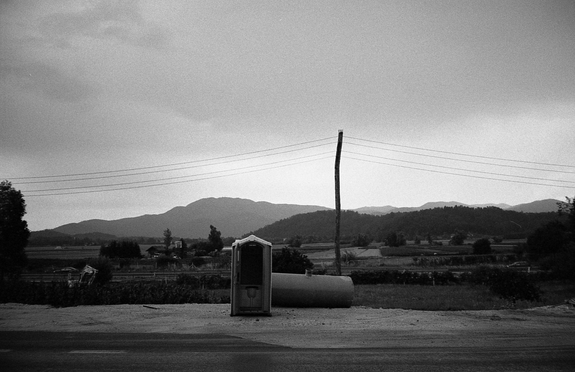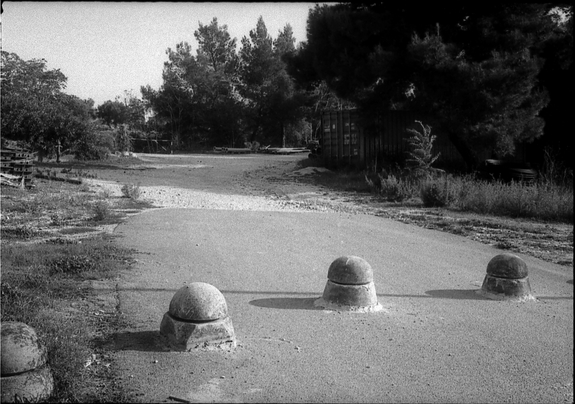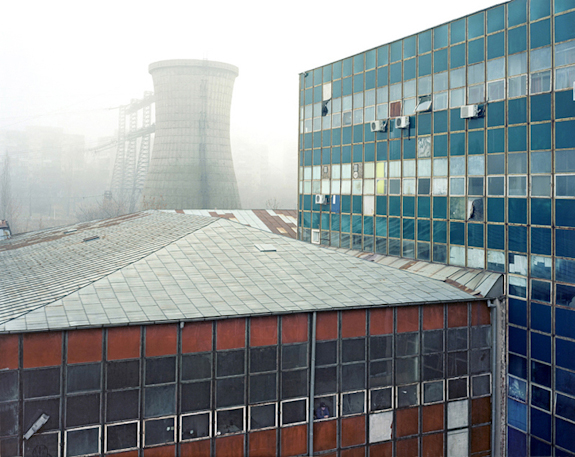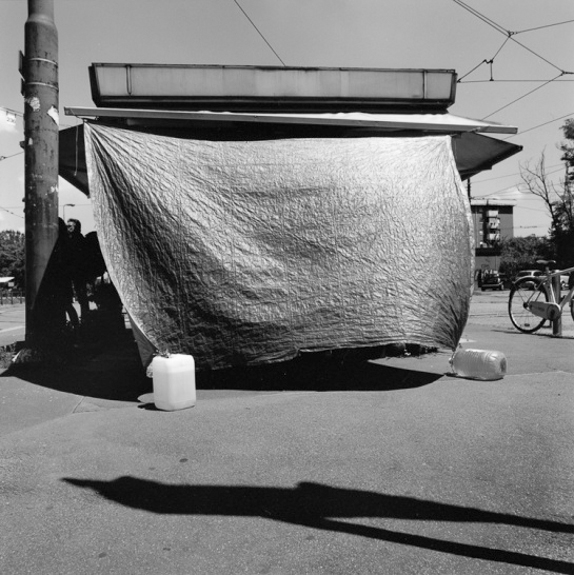
Milan is a grey city. Essentially, it’s a uniform casting of asphalt and cement. Bringing some colour to its streets is very hard work.
This project, titled Broken Flowers, is dedicated to the many and various flower kiosks spread throughout each neighbourhood of the city. It tells about an impossible challenge, lost already at the beginning, against a hostile environment, and in the good season against heat and sun too, which threaten to burn the flowers. For that reason the flower sellers have, for more than half of the year, to find any possible solution to cover carefully their merchandise through awnings and cloths of any sort, of any pattern and fabric, that they move depending on the sun movement, and the result is the picturesque look of these little “flower cottages.”
They turn out to be completely foreign, seem to have fallen out of the sky and the tents contribute to further their distance from the surrounding area. Similar, furthermore, is the state of the ones that, besides flowers, are under those tents. 90% of them are young men from Bangladesh who do not speak Italian and manage hardly to understand and to help the nowadays very few clients. For them integration is a mirage simply out of reach, an ideal landing place, last unlucky carriers of one of the activities that will be totally swallowed up by the large retailers.
— Michele Ravasio, Milan, Italy
